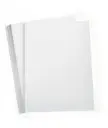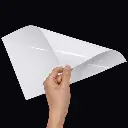thermal paper for pcb circuit
Thermal Transfer Paper for PCB Fabrication
Overview:
Thermal transfer paper (sometimes called toner transfer paper) is used to transfer PCB artwork onto copper-clad boards. By printing your PCB design onto the paper using a laser printer or copier, and then applying heat (typically with an electric iron or laminator), the toner is transferred directly onto the copper. After a brief chemical etch, the toner serves as a resist to form the desired circuit layout—a popular method for DIY, single- or double-sided boards.
Key Features:
One-time-use but cost-effective
Can achieve fine trace resolution (~0.15 mm)
Works well with standard PCB etchants like ferric chloride or ammonium persulfate
Requires minimal tools—no need for UV exposure setups
Materials & Process Summary:
Print PCB design using laser printer onto thermal transfer paper
Place artwork (toner side down) on cleaned copper board
Apply heat (with iron or laminator) to fix toner to board
Soak/peel to remove paper—toner remains on copper
Etch the board to remove exposed copper
Strip toner to reveal the final circuit
Applications:
DIY PCB creation for Arduino, ESP32, Raspberry Pi projects
Single- to double-sided board fabrication
Perfect for hobbyists, small-volume prototyping, and educational purposes
Resources:
🎥 YouTube – Thermal PCB Transfer Tutorial:



